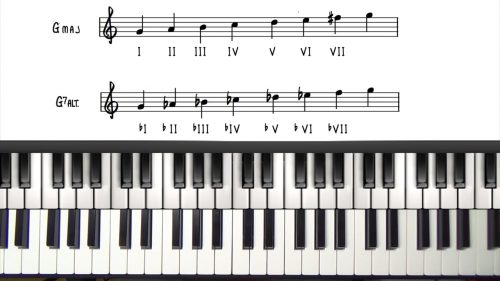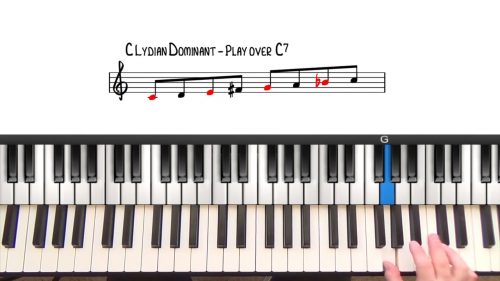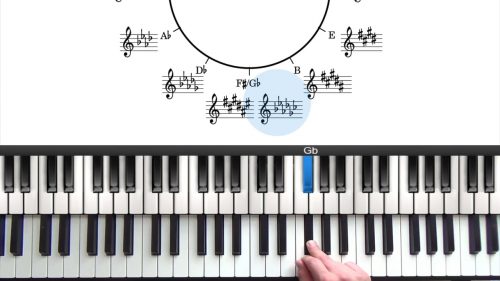Mr PC Tutorial – Improvisation & Soloing
In this lesson, we will explore the famous tune "Mr PC" and apply everything we have covered in the minor blues course. Mr. PC is a composition by John Coltrane, arguably the greatest jazz saxophone player of all time.
The piano player on the giant steps recording of this tune is Tommy Flanagan, a great bebop pianist who also played for Ella Fitzgerald.
Mr PC – Form & Chord Changes
Mr PC follows the standard minor blues form that we’ve covered throughout this course and uses some of the cool alterations and substitutions that we talked about. Written in the key of C minor, Mr PC is usually played very fast but I’ve slowed it down a little bit for the purposes of the lesson. Right now we are playing at a tempo quarter note = 190.
Mr PC Improvisation & Soloing
We will combine our knowledge of modal scales, pentatonic scales, and blues scales to create an interesting solo. These scales and modes will give you a pool of notes to create your improvised lines and ideas.
Lesson Downloads
-
Mr PC Chord Changes File Type: pdf
Practice Tips
-
Open the iRealPro App and search for Mr. PC to find the backing track for this tune.
-
Make sure the key is set to C minor and the tempo is somewhere around 190.
-
Apply and combine the material covered in previous lessons to create interesting melodic improvisation.
-
Whilst the basic concepts behind improvisation can be taught, there is no replacement for listening and transcribing from records.
- Check out the recommended recordings for inspiration to develop your improvised vocabulary.








Dear Guru,
The melody part that you have played in the 9th and 10th Bar is not matching with the notations. Pls help.
regards,
Hi Shantanu.
Great question!
When playing jazz or blues music, you have the creative freedom to change the melody, rephrase it, add notes in, takes notes away etc…
Lead sheets are a useful tool when just starting out with jazz piano, but the most effective way to learn is to listen to recordings of the tune and emulate the phrasing of the masters.
You can always use the lead sheet as a rough guide, but do not neglect listening which is an essential part of your musical development.
Hope this helps, if I can be of further assistance just let me know.
Cheers,
Hayden
In addition to working on these scales and modes (which are great, thanks) I’m copying the full improvisation for practice. It would be great if the RH chords he’s punching between phrases were spelled out – I’ve slowed it down a bunch of times and still can’t see what he’s doing :(
Never mind I finally got it – it’s just E Bb E G D :)
I’ll post the solo transcription when it’s done.